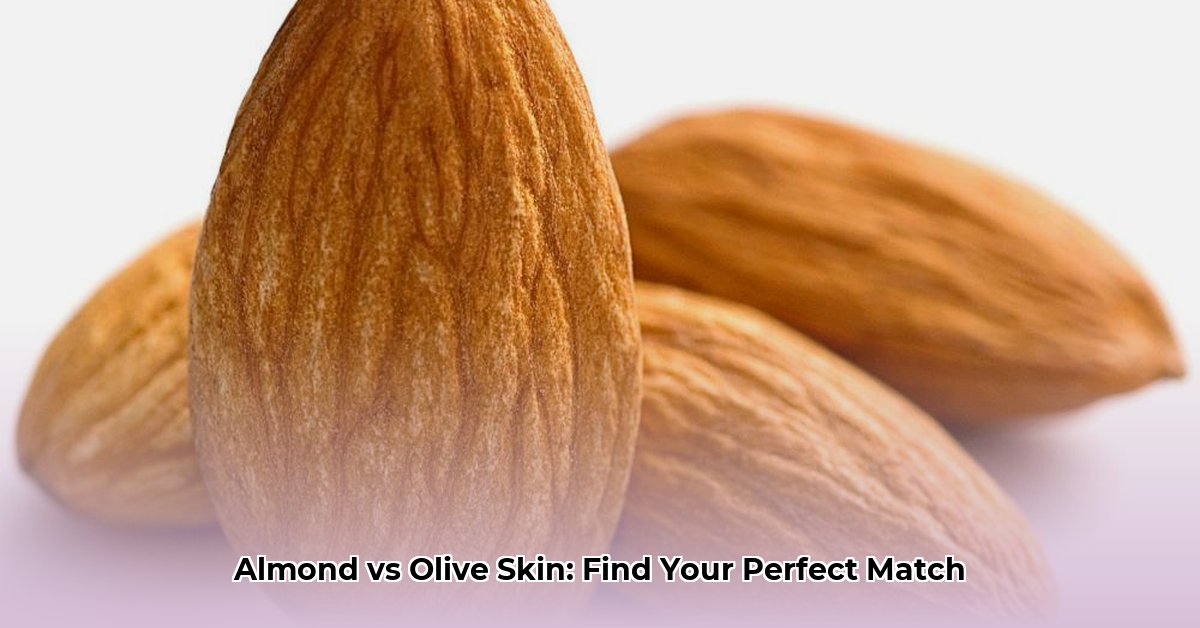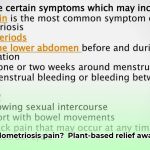Choosing the right skincare and makeup can be tricky, especially when you’re not sure what type of skin you have. Almond and olive skin tones are often mixed up, but they’re actually quite different. For a deeper dive into almond skin, check out this helpful guide: Almond Skin Tone Guide. This guide will help you understand the key differences between these two skin types so you can find the perfect skincare routine and makeup palette for you. We’ll explore what makes each skin tone unique, how to protect them from sun damage and hyperpigmentation, and offer actionable tips for keeping your skin healthy, balanced, and glowing. Whether you just want to learn more about your skin or need help finding the best products, this comprehensive guide has you covered.
Almond Skin Tone vs Olive Skin Tone: Decoding Your Complexion and Optimal Skincare
Figuring out your skin tone and undertones can feel like solving a complex puzzle, especially when similar tones like almond and olive are involved. This guide will help you understand the nuances of each, making it easier to choose the right skincare, foundation, and color palettes to enhance your natural beauty. Learn how to identify your specific skin tone and tailor your routine for optimal results.
What’s the Deal with Almond Skin? Properties and Nuances
Almond skin is generally described as a light to medium tan, reminiscent of the color of an almond. But here’s the key: it’s not a monolithic shade. The defining characteristic of almond skin is its versatility in undertones. Almond skin can exhibit cool undertones (with subtle hints of pink, red, or blue) or warm undertones (displaying more pronounced golden, yellow, or peach hues). This variation is important to consider when selecting makeup and understanding how your skin reacts to different environmental factors.
People with almond skin often share a common concern: a predisposition to hyperpigmentation and uneven skin tone. This means that sunspots, melasma, and post-inflammatory hyperpigmentation (PIH) can be more noticeable. Think of almond skin as a beautiful canvas that requires gentle care and strategic protection to maintain an even tone and radiant glow.
Understanding Olive Skin: More Than Just an Olive – Characteristics and Uniqueness
Olive skin is characterized by its distinctive yellowish, greenish, or golden undertones. It typically has a deeper base than almond skin, ranging from light to medium-dark. People often describe it as having a naturally warm, sun-kissed, and slightly earthy quality. The defining characteristic of olive skin is the presence of these unique yellowish or greenish hues, creating a subtle complexity.
These undertones significantly affect how your skin looks with different makeup and skincare products. For example, certain shades may enhance the golden tones, while others might counteract the green, leading to a dull or ashy appearance. Therefore, it’s crucial to understand your specific undertone when selecting foundation, concealer, and color cosmetics. Similar to almond skin, olive skin is particularly susceptible to sun damage, so regular sunscreen use is essential.
Almond vs. Olive: Spotting the Key Differences – Comparative Analysis
The most significant difference between almond and olive skin lies in their undertones. Almond skin can lean cool or warm, while olive skin consistently presents with those distinctive and easily identifiable yellowish, greenish, or golden undertones that provide the skin its natural warmth and sun-kissed look. While both fall within the medium to deeper brown range, these nuanced differences dramatically change how the skin looks and reacts to sunlight, makeup, and skincare products.
| Feature | Almond Skin Tone | Olive Skin Tone |
|---|---|---|
| Base Color | Light to medium brown with variable undertones | Light to medium-dark brown with consistent yellow, green, or golden undertones |
| Undertones | Pinkish, reddish, bluish (cool) or golden, yellowish, peach (warm) | Yellowish, greenish, or golden |
| Sun Sensitivity | Moderate to high; prone to sunspots, PIH, and uneven pigmentation | Moderate to high; prone to sun damage, but may tan more easily |
| Makeup Considerations | May need color correction depending on undertones; focus on even tone and brightening | Might need products to balance yellow/green; often needs color correction for redness or dullness |
| Skincare Focus | Sun protection, even skin-tone products (vitamin C, niacinamide), hydration | Hydration, sun protection, and products focusing on brightening and balancing undertones |
The Shared Challenge: Hyperpigmentation – Prevention and Treatment
Both almond and olive skin have a higher propensity for developing hyperpigmentation, which presents as those pesky dark spots, patches of melasma, or post-inflammatory marks that can detract from an otherwise even complexion. This shared vulnerability makes consistent sun protection absolutely non-negotiable for both skin types. A daily, broad-spectrum sunscreen with at least SPF 30 is essential. Consistency is key: integrate sunscreen into your daily routine year-round, even on cloudy days!
Did you know that consistent sunscreen use can reduce the risk of hyperpigmentation by up to 80%? Furthermore, research shows that individuals who diligently apply sunscreen daily experience significantly fewer signs of premature aging, including wrinkles and sunspots.
Actionable Steps for Radiant Skin – Practical Advice and Tips
Taking good care of your skin, whether it’s almond or olive, doesn’t need to be complicated or time-consuming. Here’s a streamlined approach to achieve and maintain a healthy, radiant complexion:
- Daily Sunscreen: This is the cornerstone of any effective skincare routine. Apply liberally every morning, at least 15-30 minutes before sun exposure. Reapply every two hours, especially if you’re sweating, swimming, or spending extended periods outdoors.
- Gentle Cleansing: Use a mild, sulfate-free, creamy cleanser that cleanses without stripping your skin’s natural oils. Harsh cleansers can exacerbate hyperpigmentation and lead to dryness and irritation.
- Hydration, Hydration, Hydration: Drink plenty of water throughout the day to maintain optimal skin hydration from the inside out. Supplement with a hydrating moisturizer suited to your skin type. Look for ingredients like hyaluronic acid, glycerin, and ceramides to lock in moisture.
- Targeted Treatments: If you have specific concerns like dark spots, melasma, or uneven skin tone, incorporate targeted treatments into your routine. Look for products containing proven ingredients like vitamin C, niacinamide, azelaic acid, kojic acid, or alpha arbutin. Always patch-test a new product on a small area first to check for sensitivity.
- Gentle Exfoliation: Incorporate gentle exfoliation into your routine 1-2 times per week to remove dead skin cells and promote cell turnover. Chemical exfoliants like AHAs (glycolic acid, lactic acid) or BHAs (salicylic acid) can be highly effective.
- Seek Professional Advice: Unsure about what’s best for your skin or struggling with persistent hyperpigmentation? A board-certified dermatologist or licensed esthetician can provide personalized recommendations and treatment options.
Remember, these are general guidelines. Experiment to discover what works best for your unique skin. Your skin is dynamic, so pay attention to how it reacts to different products and adjust your routine accordingly. And don’t hesitate to seek professional guidance; they’re there to support you on your skincare journey!
Best Retinol for Almond Skin Tone Hyperpigmentation: Deciphering the Nuances for a Flawless Complexion
Key Takeaways:
- Retinol’s effectiveness in treating hyperpigmentation stems from its ability to accelerate cell turnover and inhibit melanin (skin pigment) production.
- Formulation is paramount: concentration, delivery system, and added ingredients all influence retinol’s efficacy and tolerance.
- Gradual introduction and careful concentration selection are crucial for optimal results, especially for sensitive or reactive skin.
Understanding Almond and Olive Skin Tones: Complexion Insights
Almond and olive complexions both fall under the broader category of “warm” skin tones. However, as discussed, subtle variations exist that influence how your skin responds to active ingredients like retinol. Almond skin often presents with a lighter, more golden hue and a tendency towards yellow undertones. Olive skin, in contrast, typically exhibits a deeper, more greenish-brown base, also with hints of yellow and green.
Think of it like this: almond skin is akin to a delicate, sun-kissed honey, while olive skin carries the richness and depth of freshly pressed olive oil. Both are beautiful and warm-toned, but distinctly different in their undertones and overall appearance.
Retinol and Hyperpigmentation: A Closer Look – Unveiling the Potential
Hyperpigmentation, characterized by stubborn dark spots and uneven patches, arises from the overproduction of melanin. Retinol, a potent derivative of Vitamin A, combats this by fundamentally accelerating skin cell turnover. This process effectively pushes hyperpigmented cells to the surface, allowing for their exfoliation and the revelation of a brighter, more even-toned complexion. Crucially, retinol also inhibits melanin production at the source, further reducing the appearance of dark spots and preventing future hyperpigmentation.
Choosing the Right Retinol for Almond Skin – A Detailed Guide
Finding the best retinol for almond skin tone hyperpigmentation involves carefully considering several key factors to maximize efficacy while minimizing potential irritation:
- Concentration: Start low and slow! Begin with a low concentration of 0.01% – 0.03% retinol and
- Plant-based Diet Colitis Remission: Success Stories - December 18, 2025
- Plant Based Diet Breast Cancer: Research-Based Benefits - December 16, 2025
- Plant-Based Diet Ulcerative Colitis Remission: Proven Benefits - December 15, 2025










